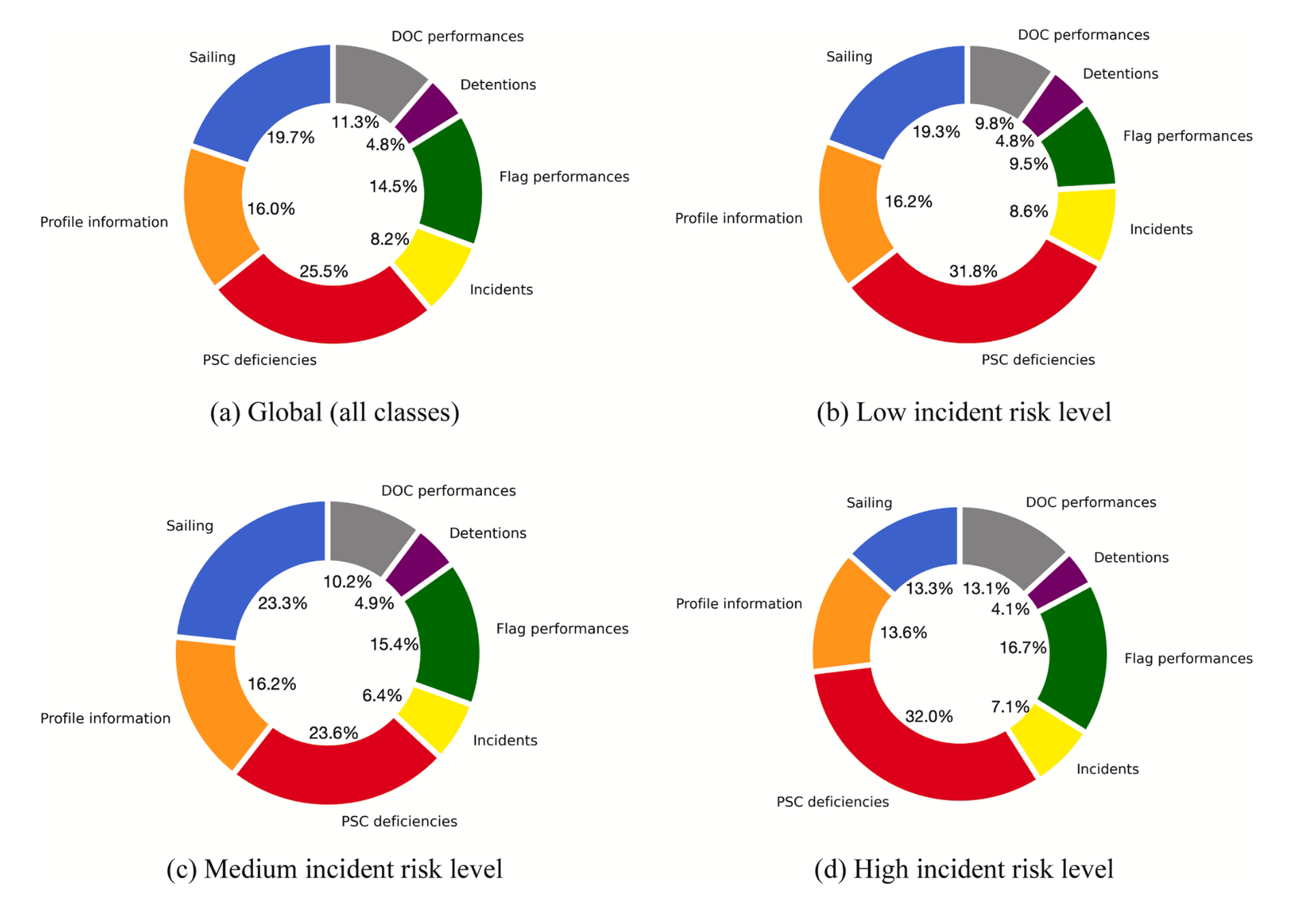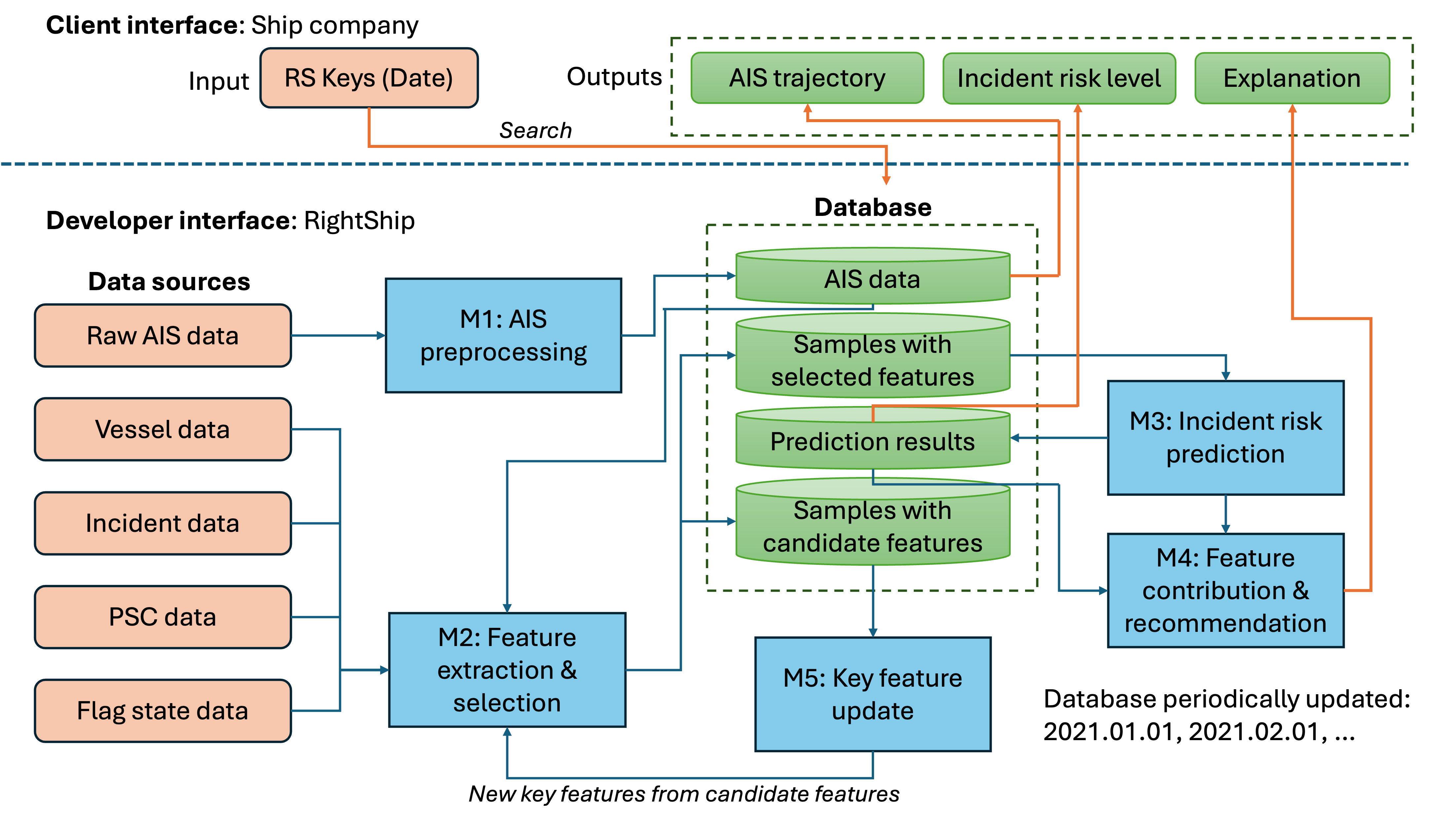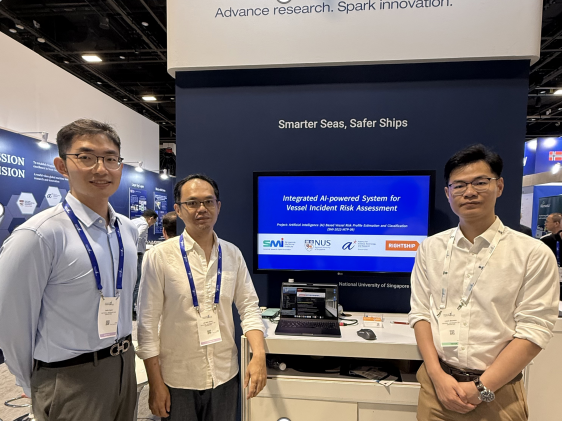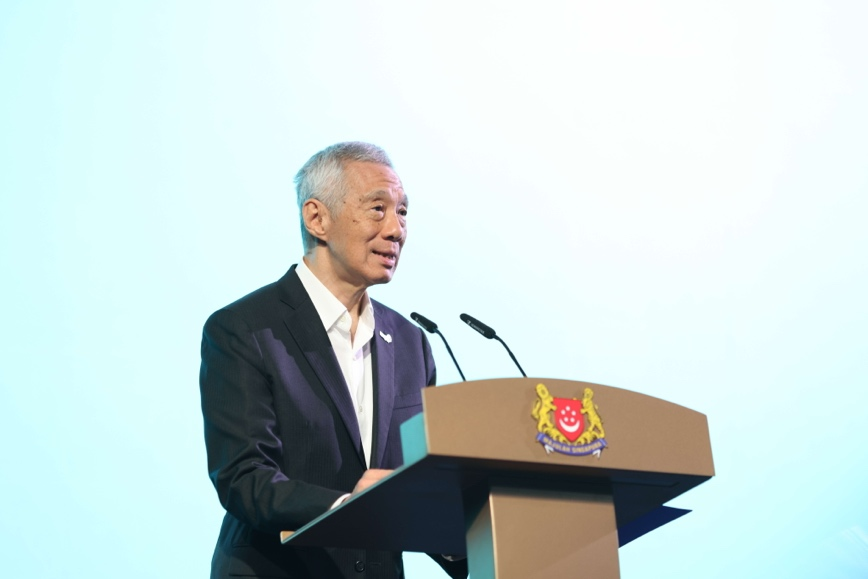The NUS Guangzhou Research Translation and Innovation Institute is committed to building a platform for interdisciplinary and cross-domain scientific research exchange, promoting the effective transformation and application of research achievements. We will regularly share cutting-edge research results and updates in this section. We welcome your engagement and discussions!
The research introduced in this article originates from the team led by Professor Meng Qiang from the Department of Civil and Environmental Engineering at the National University of Singapore. Professor Meng also serves as a Ph.D. supervisor at the NUS Guangzhou Research Translation and Innovation Institute (NUS GRTII).
Research Background
The maritime industry faces persistent challenges in assessing and mitigating vessel safety risks due to the complexity, diversity, and fragmentation of global maritime data. Traditional risk assessments often rely on expert judgment or incomplete records, limiting their accuracy, scalability, and timeliness. With the rapid growth of digital maritime data, particularly AIS records and incident reports, there is a critical need for intelligent, data-driven systems to enhance maritime safety.
This research addresses these challenges by integrating multi-source big data—including Automatic Identification System (AIS) trajectories, Port State Control (PSC) inspection records, and textual incident reports—into a comprehensive vessel incident risk assessment framework. By applying advanced AI techniques such as machine learning, Natural Language Processing (NLP), and ensemble modeling, the project provides accurate, interpretable, and forward-looking risk evaluations for individual vessels.
In this research, an improved embedded feature selection method, which integrates Random Forest classifier with a feature filtering process, is proposed to identify key risk-contributing features from the candidate pool. Given a specified date-stamp, we use the incident risk level in the forthcoming year as the label to represent the incident likelihood of a vessel. The candidate features are grouped into seven categories, namely, incidents, PSC deficiencies, detentions, sailing, Document of Compliance (DOC) performances, flag state performances, and profile information. Excluding the profile information, the candidate features from the remaining categories are extracted over the past five years from the given date-stamp. As shown in the below figure, the proposed feature selection method consists of three steps: classifier training, feature filtering, and cross validation.

Figure: Framework of proposed feature selection method.
As a result, they are 15 features selected as the key features. The importance of the key features within each factor category is aggregated, and the pie charts in the below figure visualize the aggregated importance of the key features in each category. The primary analytical results regarding the aggregated global feature importance are summarized as follows:
• The features related to PSC deficiencies in the past years contribute most to the future incident likelihood. This means that PSC deficiencies play a significant role in identifying incident risk of vessels.
• The features related to the performances of the management entities that the vessel belongs to, such as DOC company and flag state, seem more significant. This suggests that the incident likelihood might be more profoundly influenced by the regulatory compliance and management effectiveness of the entities.
• The impact of historical events (e.g., PSC deficiencies, incidents, etc.) on the future incident likelihood can indeed vary, and their durations of impact may differ. Some events may have a long-lasting impact, while the others may have a more immediate or short-term effect.
The details can be found in the following article: Chen, T., Wang, H., Cai, Y., Liang, M., & Meng, Q. (2025). Exploring Key Factors for Long-Term Vessel Incident Risk Prediction. Reliability Engineering & System Safety, 253, 110565.

Figure: Aggregated feature importance with respect to factor categories.
We have developed an ‘ensemble of ensembles’ meta-classifier that integrates four state-of-the-art machine learning models: Support Vector Machine (SVM), Random Forest (RF), TAN Bayesian Network (BN), and LightGBM. The model predicts a vessel’s incident risk, which reflects the probability of the vessel being involved in at least one incident in the following year, based on the 15 key features. The prediction model is trained and validated using historical data spanning from 2016 to 2023 based on cross-sectional training schedule to ensure robust performance and generalizability. As shown in the below figure, to enhance risk differentiation, we also propose a Radial Basis Function (RBF) surrogate-based optimization model that grades the predicted probabilistic incident risks into distinct and interpretable levels, namely, low, medium, and high, to support clearer risk communication and more informed decision-making.

Figure: Incident risk level determination.
The final product is a user-friendly software system that supports predictive risk analysis and enables stakeholders—such as regulators, ship operators, and insurers—to make proactive, evidence-based safety decisions. This work represents a significant advancement in maritime safety analytics and contributes to global efforts toward smarter, safer, and more accountable shipping operations.
The system is designed to predict a vessel's likelihood of being involved in an incident within the next year and to provide explanations and recommendations based on the prediction results. Large Language Model (LLM) technique is employed to interpret the prediction results, explaining the contribution of each selected feature to the prediction outcome for each vessel and providing improvement recommendations accordingly in a manner that is easily understandable to non-technical persons. The framework of this system is illustrated in the below figure. The inputs of the system comprise raw AIS data, vessel data, incident data, PSC data, and flag state data, while the outputs consist of vessel’s AIS trajectory, incident risk level, and explanation of the prediction results. The system is designed with two interfaces: developer interface and client interface. The developer interface is intended for agents providing risk assessment services, while the client interface is designed for ship companies seeking insights into a vessel's future safety performance. Some techniques used in this system have been filed as a patent: Chen T., Wang, H., Cai, Y., Liang, M., Meng, Q., Malik, A. & Saunders, C. (2025). Method and System for Maritime Incident Summarization and Assessment System. Singapore Provisional Patent. SG Patent Application No. 10202500317P.

Figure: System framework.

Figure: Example of software user interface.
Impact and Applications
This research contributes directly to enhancing global maritime safety through predictive analytics. By identifying high-risk vessels before incidents occur, the system can help regulators prevent incidents, protect marine environments, and improve inspection efficiency. For the industry, this offers significant operational and financial benefits—ranging from reduced insurance premiums to optimized fleet management and regulatory compliance.
The system is designed with practical deployment in mind and aligns with digital transformation goals in port and shipping operations. We actively seek industry and academic partnerships in the following areas:
1. Industry pilots with ship operators, port authorities, or classification societies to validate and refine the system in real-world scenarios.
2. Technology licensing to maritime safety solution providers or insurers.
3. Joint research on integrating human factors, economics, or ESG metrics into the risk framework.
4. Regulatory collaboration with maritime agencies to align outputs with inspection protocols and safety benchmarks.
Team Introduction
This project is funded by the Singapore Maritime Institute (SMI) and conducted in collaboration with A*STAR and RightShip. This project was completed by Prof. Meng Qiang, Dr. Chen Tianyi, Dr. Liang Maohan, Dr. Lee Wei Siong, and Dr. Guan Hao from NUS, Prof. Wang Hua from Hefei University of Technology, China, and Dr. Cai Yutong from Singapore University of Technology and Design (SUTD).

Left-to-right: Dr Chen Tianyi, Dr Lee Wei Siong, Dr Liang Maohan
The NUS research team was invited by the Singapore Maritime Institute (SMI) to participate in Singapore Maritime Week 2025 and showcase the developed software. The exhibition drew the attention of Mr. Lau Peet Meng, Permanent Secretary of the Ministry of Transport, and Professor Tan Chorh Chuan, Permanent Secretary for National Research and Development. The software also garnered significant interest from prominent maritime industry stakeholders, including Lloyd's Register of Shipping, Pole Star Global, and others.

Senior Minister Lee Hsien Loong delivered the Singapore Maritime Lecture at the opening of Singapore Maritime Week on 24 March 2025: “We are investing in technology and innovation. We are developing an AI-enabled Next Generation Vessel Traffic Management System, to improve the safety and efficiency of port operations”

We look forward to working with global research experts, entrepreneurs, and policymakers to stimulate innovative thinking, explore the infinite possibilities of scientific research, and establish an interdisciplinary and cross-field ecosystem for scientific research and innovative applications.


